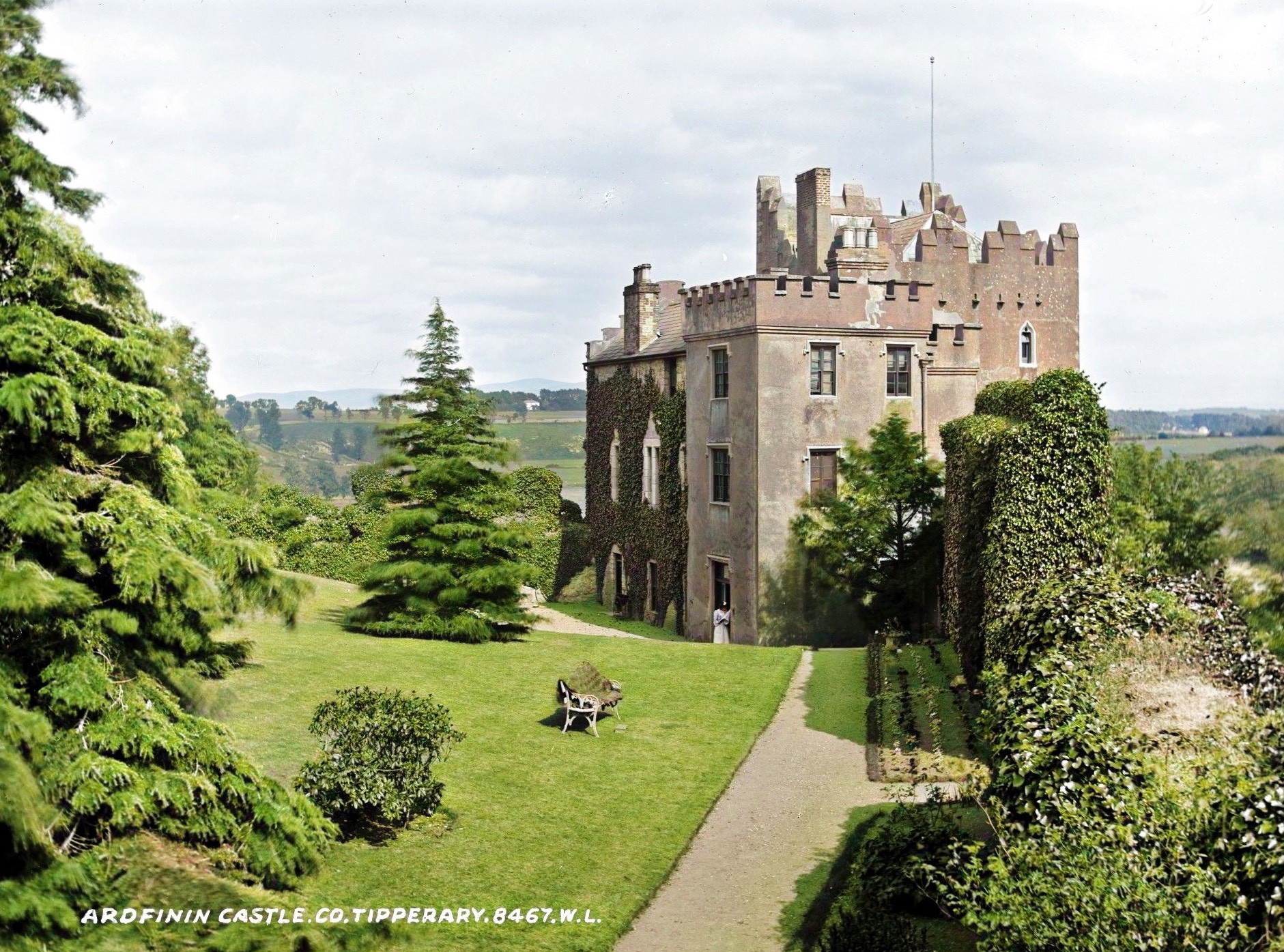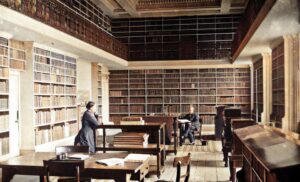Ardfinnan Castle stands on a rocky outcrop above the River Suir in County Tipperary, Ireland, commanding views across the valley toward the Galtee Mountains to the northwest and the Knockmealdown Mountains to the south. Built in 1185, this fortress represents one of the earliest Norman strongholds in Ireland and holds the distinction of being the first castle constructed and occupied by a member of the English Crown in the country.
Origins and Early Norman Period
Prince John of England, then Lord of Ireland, ordered the construction of Ardfinnan Castle during his first expedition to Ireland in 1185. The site was strategically chosen to guard the northern border of Waterford from the Gaelic kingdom of Thomond, positioned at a crucial ford crossing of the River Suir. The location had been proposed by John’s father, Henry II, following his reconnaissance of potential castle sites with Hugh de Lacy in 1171.
The castle was built alongside its sister fortress at Lismore on the River Blackwater, both constructed on scenic monastic sites established by Saint Carthage around 630 AD. Maurice de Prendergast, a Cambro-Norman knight, received the grant of the Manor of Ardfinnan and served as the castle’s first governor, protecting what contemporary documents referred to as “Castrum de Harfinan.”
John’s Irish campaign proved short-lived. Irish forces, led by Donal O’Brien (King of Munster), Rory O’Conner (King of Connacht), and Dermod MacCarthy (King of Desmond), first captured Lismore Castle by surprise, killing its governor Robert de Barry and his entire garrison. When they advanced on Ardfinnan, O’Brien recognized the impossibility of taking the imposing fortress by direct assault. Instead, he feigned retreat, drawing the small Norman garrison into pursuit across the river. Once the knights were exposed on open ground, O’Brien surrounded and destroyed most of them, subsequently capturing Ardfinnan Castle. These defeats decimated John’s original force of 300 men, and by December 1185, he was recalled to England, leaving Hugh de Lacy at Ardfinnan.
Medieval Development
By 1210, the surrounding Cantred of Ardfinnan had passed to Philip of Worcester, with a permanent presence established by the Knights Templar and later the Knights Hospitaller. The Hospitallers, recognizing the castle’s importance in protecting the pass between the ecclesiastical centers of Cashel and Lismore, constructed the surviving circular keep in the early 13th century. This cylindrical tower, uncommon in Ireland for its round rather than square design, included a semi-circular staircase annex.
The Knights Templars established local industries, including a fulling mill, building on a historical tradition of spinning and weaving in the village. Records from 1295 mention a William le Teynturer (William the Dyer), indicating the continuation of cloth production in the area.
Architectural Evolution
The original Norman castle followed a parallelogram plan with square battlements at the corners and a fortified entrance gateway. A mid-15th century addition introduced a square tower house at the southeast angle of the surviving south circuit of the medieval bawn. This four-story structure features two-bay side elevations with pointed single-light and double-light windows, chamfered limestone surrounds, and a pointed-arch entrance door with studded timber battened door and metal strap hinges.
Subsequent centuries brought substantial modifications. Around 1750, builders added a four-bay three-story block to the north side of the tower house, with a slightly advanced west bay. Further construction around 1885 included a two-story block to the west and a lower canted single-bay entrance link connecting these later additions.
Cromwellian Siege and Destruction
The castle’s military significance was demonstrated again during the Cromwellian conquest of Ireland. On February 2, 1650, Major General Henry Ireton, seeking to cross the River Suir with his army, targeted Ardfinnan’s strategically placed bridge. David Fitzgibbon, known as the White Knight and serving as Governor of Ardfinnan Castle, defended the fortress with a small garrison.
Ireton positioned cannons on a hill opposite the castle and began bombardment at four o’clock in the morning on February 3. After approximately eight shots created a large breach in the walls, Parliamentary forces killed thirteen of the outer guard while losing only two men. Fitzgibbon promptly surrendered, sparing his life but resulting in his transplantation to Connacht in 1653 and the loss of his Ardfinnan lands.
The New Model Army used Ardfinnan as a garrison throughout their Irish campaign, with supplies arriving at Youghal transported via the Blackwater at Cappoquin and then across the Suir at Ardfinnan to reach forces in Tipperary. Upon departure, Cromwellian troops slighted the castle, leaving it partially ruined.
Georgian Military Revival
French Revolutionary War threats prompted the castle’s reoccupation in 1795 as a British Army garrison. Despite its ruined condition, the position still commanded the crucial Suir crossing. The site became a summer training camp for fencible units, with reserves prepared against potential French invasion. Initially temporary, the encampment became permanent in March 1796 under orders from John Pratt, 1st Marquess Camden, housing 2,740 predominantly Protestant soldiers. The camp disbanded by 1802.
Restoration and Modern Era
The 18th or early 19th century saw the restoration of 15 acres including Ardfinnan Castle to a descendant of Maurice de Prendergast, relatives of Sir Thomas Prendergast, now Protestant Ascendancy landowners from Newcastle. Around 1846, the castle’s tower house received restoration with adjoining buildings, essentially converting it into a country house.
Admiral Sir Robert Prendergast, the last family member to hold the seat at Ardfinnan Castle, retired to England in 1920. John Mulcahy, owner of the local Ardfinnan Woollen Mills, purchased the castle in 1921. Further restorations occurred by 1929, during which William Mulcahy discovered a Spanish helmet from the 1601 Siege of Kinsale in the castle grounds. The most recent addition, a three-story gable-ended wing, was likely constructed during the 1930s.
Current Status
Today, Ardfinnan Castle presents a complex multi-period structure combining medieval fortification with later domestic additions. The building features pitched slate roofs with stepped crenellations on the tower house and simpler crenellations elsewhere. Construction materials include coursed rubble and dressed limestone, with various periods employing brick quoins, rendering, and snecked dressed limestone. The structure incorporates square-headed and pointed window openings with chamfered limestone surrounds, timber sliding sash windows, and metal casements.
The ruined circular keep remains a distinctive feature, while rendered staircases lead to stepped gardens. Octagonal-plan rendered piers support decorative wrought-iron gates at the site entrance, with rendered and crenellated rubble limestone walls completing the boundary.
Privately owned and not open for public viewing, Ardfinnan Castle continues to dominate the village and surrounding landscape from its elevated position. The medieval fortress, domestic additions, and surrounding grounds represent nearly 850 years of Irish architectural and political history, from Norman conquest through modern restoration.






